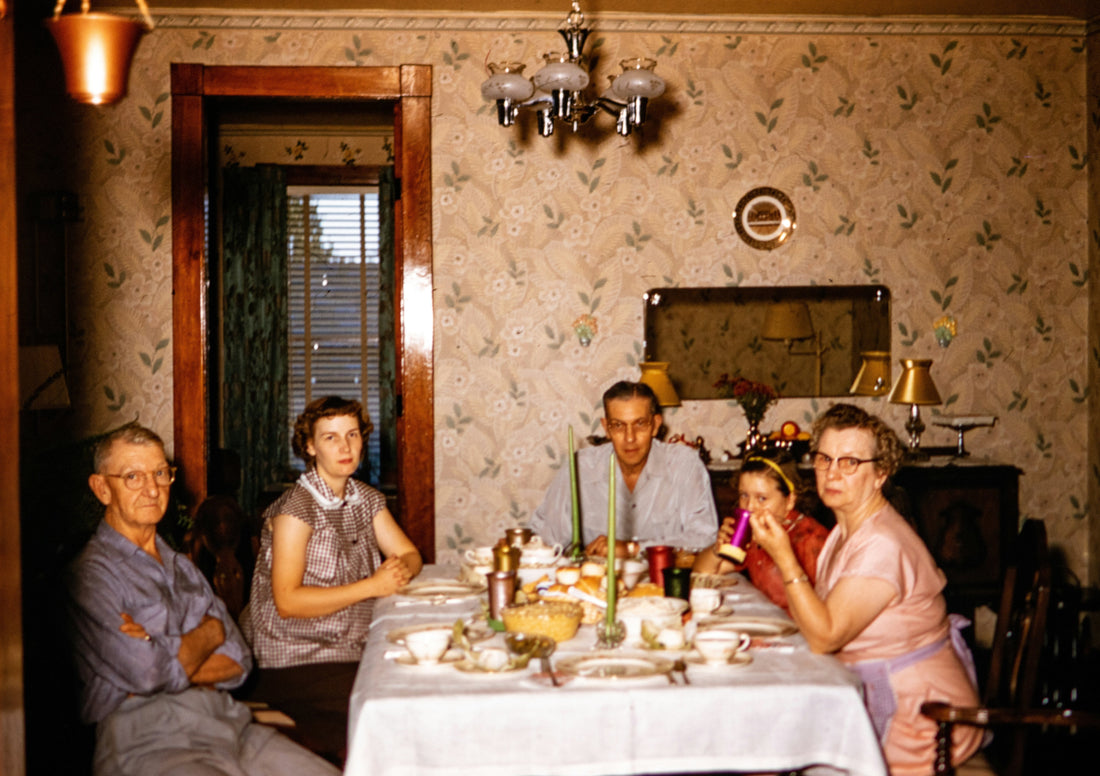
The resurgence of the dinner party.
For many, eating out once meant celebration. A birthday, a graduation, a rare evening when parents chose to take a break from cooking. The rest of the time, family life unfolded around the kitchen table. A home-cooked meal, shared stories of the day, the rhythm of presence and repetition. It was so ordinary that few thought to notice its extraordinariness.
In hindsight, that nightly ritual of gathering for dinner has become a marker of an entire generation’s memory. The family table was both anchor and stage: a place where conversation, mundane, meandering, or momentous, was woven into the fabric of daily life.
Why are shared meals so important?
Research continues to affirm what past generations knew instinctively: eating together strengthens bonds. Family dinners are linked to better communication, stronger emotional resilience, and even improved wellbeing. The act of sitting down at the same table, free from distractions, offers something that no restaurant, however stylish, can replicate.
The table, in this sense, becomes an artefact of belonging, a silent witness to jokes, disagreements, confidences, and reconciliations. Meals provide a rhythm that both marks and softens the passing of time.
Why are we eating out more than ever?
In urban centres, eating out has shifted from luxury to lifestyle. With restaurants and bars opening weekly, it is easy to let the city’s buzz replace the slower rhythm of the home table. Dining out offers variety and spectacle, but often at the expense of intimacy. There is little space for the uncurated moments: the unhurried pause, the half-finished bottle of wine, the candle that burns down long after dessert.
The performance of restaurant dining also carries a different weight. It is about service, presentation, the polish of a curated space. At home, the measures are gentler: whether people feel comfortable enough to linger, whether the food invites seconds, whether the evening stretches into something unplanned.
What makes home dinner parties so different?
The resurgence of the casual dinner party suggests a quiet cultural shift. Hosting at home is less about entertaining in the grand sense and more about hospitality in its truest form: creating a space where people feel welcome.
Homes carry the patina of lives lived, the books on shelves, the artwork chosen, the pieces of furniture inherited or found. To invite others into that space is to share more than food. It is to extend a kind of intimacy, one that cannot be reproduced in the sleek anonymity of restaurant dining.
Even the imperfections become part of the charm. The salad thrown together at the last minute, the mismatched glasses, the pasta that clings together. Guests remember not the menu but the atmosphere: conversation that drifts and deepens, the freedom to linger, the sense of being inside someone’s world.
Why is eating in making a return?
Culturally, there is a renewed appetite for meaning in daily rituals. As sustainability, cost-of-living, and a desire for deeper connection & community grow, the appeal of the home dinner party also grows stronger. It is a recognition of what has always been true: meals eaten together, in the spaces we call home, nourish us in ways beyond the plate.
The return of the home table signals something hopeful. Even in an age of speed and convenience, people still seek the unhurried company of others. The simplest option, eating at home, remains the one that leaves the deepest impression.
The quiet legacy of the dinner table
Perhaps this is the quiet legacy of the dinner table: its ability to remind us that the most meaningful parts of life are rarely spectacular. They are found in the clatter of cutlery, the ebb and flow of talk, the familiar scrape of a chair being pulled closer. To host, to share food, to linger—these are acts that give shape to our memories and depth to our connections.
Restaurants will continue to dazzle and delight. But it is the nights spent at home, around tables worn smooth with use, that root us in something more enduring. In an age that prizes novelty, the real treasure may lie in returning to what has always been ours: the simple magic of eating in.
At The Dairy, we believe the objects we place on the table become part of these rituals. A cast-iron pan seasoned over time, hand-thrown ceramics, linen softened by years of use. These pieces carry memory, care, and beauty into the everyday. To invest in them is to invest in the quiet theatre of eating in, where meals become moments and objects become heirlooms.
